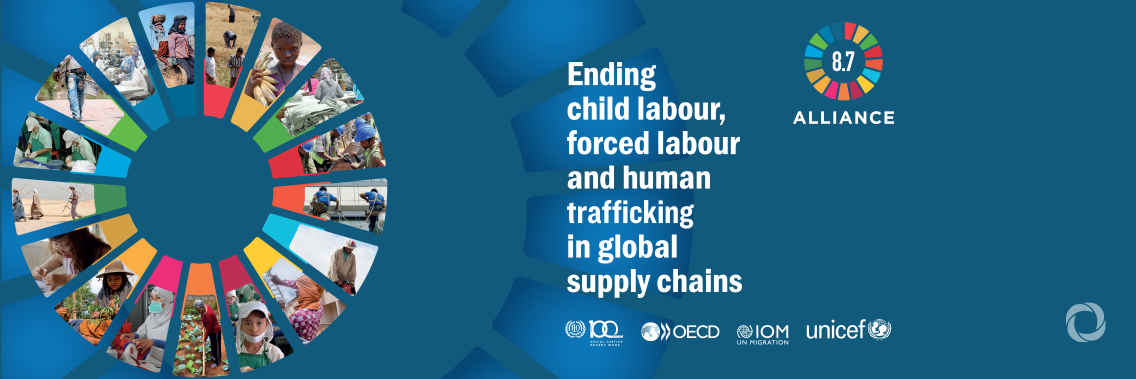New information on child labour, forced labour and human trafficking in global supply chains is revealed in a report compiled by the ILO, OECD, IOM and UNICEF – members of the Alliance 8.7 partnership on child labour, forced labour, modern slavery and human trafficking.
A new report indicates that a significant share of child labour and human trafficking in global supply chains occurs at their lower tiers, in activities such as raw material extraction and agriculture, making due diligence, visibility and traceability challenging.
The report, Ending Child Labour, Forced Labour and Human Trafficking in Global Supply Chains provides the first-ever estimates of child labour and human trafficking in global supply chains.
The estimated share of total child labour linked to production in global supply chains varies across regions:
- 26 percent in Eastern and South-Eastern Asia.
- 22 percent in Latin America and the Caribbean.
- 12 percent in Central and Southern Asia.
- 12 percent in Sub-Saharan Africa.
- 9 percent in Northern Africa and Western Asia.
“The goods and services we buy are composed of inputs from many countries around the world and are processed, assembled, packaged, transported and consumed across borders and markets,” said ILO Director-General Guy Ryder. “This report shows the urgent need for effective action to tackle the violations of core labour rights that are occurring in supply chains.”
The report outlines several key areas in which governments and businesses can do more.
It underscores the critical role of States in addressing gaps in statutory legislation, enforcement, and access to justice (which creates space for non-compliance) and in establishing a framework for responsible business conduct. It also examines how Governments can lead by example by integrating due diligence considerations into their own activities as procurers of goods and services, owners of enterprises and providers of credit and loans.
The report also outlines a broader preventive approach focused on root causes, including child and family deprivation, particularly in the upstream and outsourced segments of global supply chains operating in the informal economy, where risk is greatest.
“These results make clear that efforts against human trafficking in global supply chains will be inadequate if they do not extend beyond immediate suppliers to include actors upstream engaged in activities such as raw material extraction and agriculture, and serving as inputs to other industries,” said IOM Director General Antonio Vitorino.
For business, the report underscores the need for a comprehensive, whole-of-supply-chain approach to due diligence, involving the assessment, prevention and mitigation of negative human rights impacts, as well as legitimate channels for remediation in cases in which business has caused or contributed to adverse impacts.
The estimates were generated by combining data on the estimated total number of children in child labour with data on trade flows and value chains within countries and across borders. The same exercise was carried out for human trafficking.
Read and download the report: Ending Child Labour, Forced Labour and Human Trafficking in Global Supply Chains.
Original source: IOM
Published on 12 November 2019

